Classic frittata recipe (with smoked salmon, fresh corn, and herbed goat cheese)
A frittata is a beautiful, easy meal to make. Combine eggs with meats, vegetables, herbs, cheese, or pretty much any other prepared ingredient you have around, and within 20 minutes you have a delicious, healthy, fancy-seeming meal. As an added bonus it’s perfect for making ahead, since you can wrap and freeze it for up to 1 month or at the very least save the leftovers (which are equally good room temperature or warm) for breakfast or lunch the next day. (A slice of frittata and some bread make a pretty delicious sandwich, I might add.)
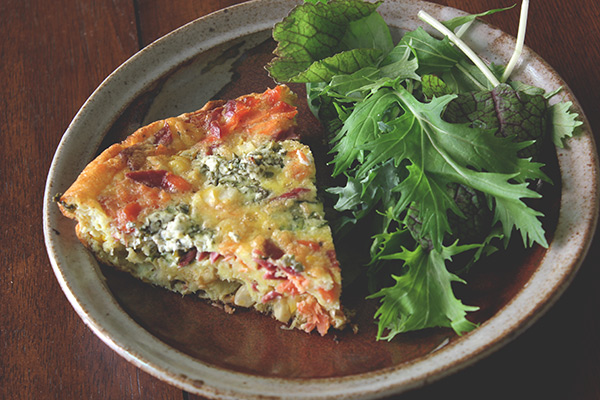
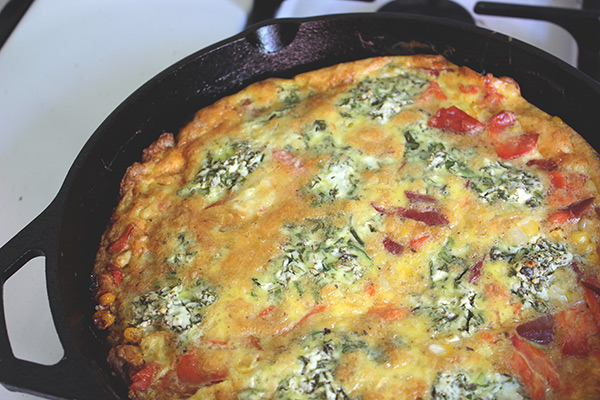
And this is exactly the sort of dish I’ve been thinking about a lot lately. I’ve mentioned on the site before that I’ve been putting together a guide to these sorts of basic, foundational recipes, all of which act as a backbone or a stage for whatever vegetables, proteins, grains, or other items I happen to have in my kitchen or that look good at a market stand. These recipes make it easy to eat seasonally and help me avoid the sort of puzzle-piecing anxiety that results from grocery shopping without a plan in mind, and for most people having these sorts of recipes around can open a new world of quick, easy, healthy home-cooked meals. I love to talk about these sorts of “anything goes” recipes because they do wonders at making people more interested in cooking, more comfortable in the kitchen, and more at-ease with letting go of recipes and diverging from planned-out shopping lists.
I’ve taught a lot of classes over the last few years and have engaged with a lot of folks who often feel uncomfortable, limited, or at the very least uninspired in the kitchen. They often feel that cooking takes too much planning and too much work, and it generally leads to eating out or buying pre-packaged food more than they’d like. They wish they felt comfortable picking up whatever looked best or had the best price at the grocery store or the farmers’ market, and they wish they ate more seasonally, but without a specific meal plan and shopping list they feel too overwhelmed.
I can absolutely relate to this – there have been times at a farmers’ market where I’ve found myself trying puzzle-piece together everything I want to buy, wracking my brain to remember what’s in certain recipes and trying make sure I don’t end up with too much or too little to get me through to the next market day.
But what’s changed this process for me is having these sorts of recipes in mind and keeping my kitchen stocked with the basic ingredients – mostly dry pantry ingredients like starches, greens, and beans, along with basic perishable ingredients like eggs, milk, butter, herbs, onions, garlic, and some sort of cheese. (Which reminds me that many moons ago I started working on a pantry guide for this site, and should bring that out again …) So far on this site I’ve talked about polenta, risotto, improvisational main-dish salads, and my all-time favorite “best-ever lentils,” each of which can combined with just about any sauce, stew, vegetable, protein (meats, fish, eggs, etc.), or other options to make a full and delicious meal, and now I can add frittata to that list. I didn’t plan this one ahead of time at all, but looked around my kitchen and noted things I had – a few ears of corn I had purchased at the market with no plan in mind; some smoked salmon; and a small piece of basic, inexpensive goat cheese. We almost always have eggs and herbs in the house, and in 20 minutes I had enough for dinner and lunch for the two of us.

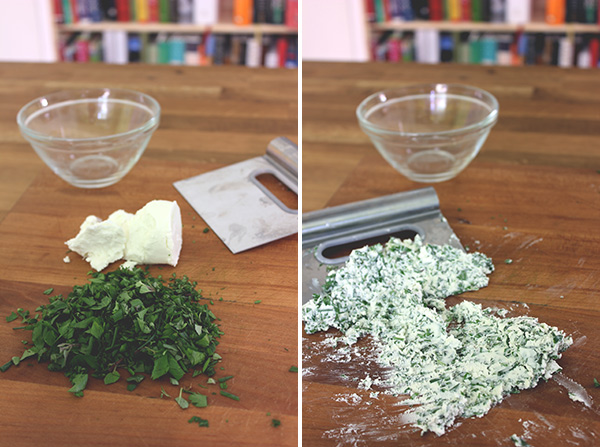
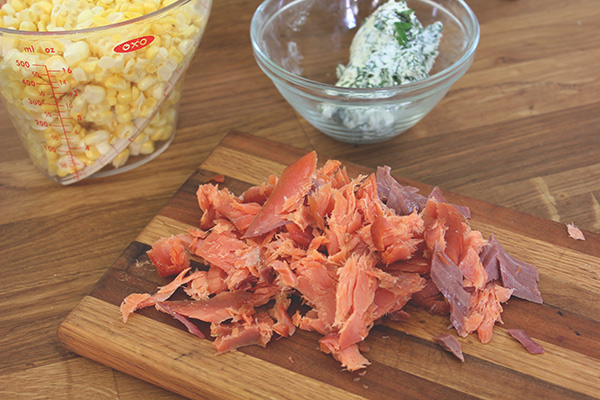
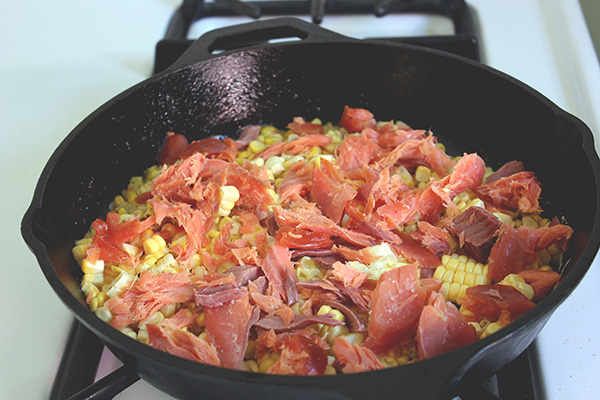
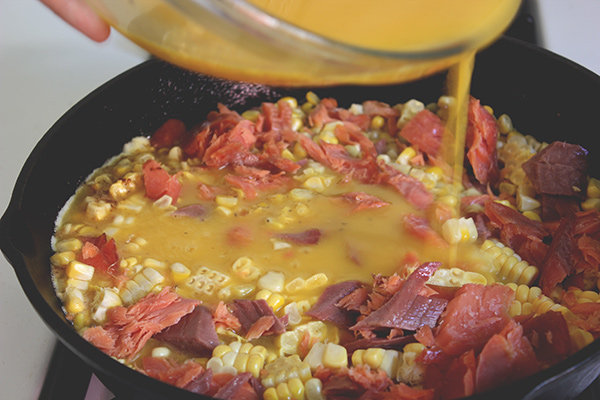
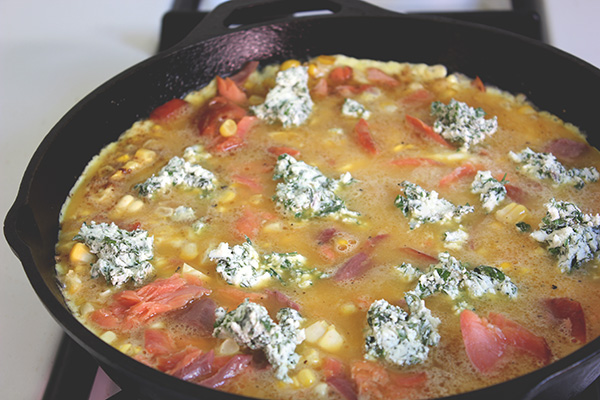
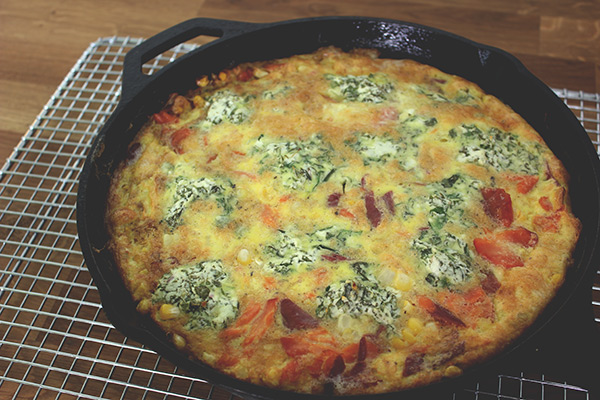
Before we get to the recipe, let’s talk about fillings for a moment. You really can almost anything into a frittata, but the main rule of thumb is to put in things prepared in a way that you would otherwise eat them. Meaning: If you would usually eat it raw (e.g. tomatoes, fresh corn), put it in raw. If you would usually eat it cooked (e.g. sausage, ham, mushrooms, onions), cook and season it as if you were eating it on its own. (The exception to this rule is that something that will cook with only a bit of heat – like fresh or frozen peas, or thinly sliced zucchini – can be put in raw.)
Here are some good options to consider (only listed as examples, since you can use almost anything you have in your kitchen):
- Raw or quickly-cooking veggies: tomatoes, corn (frozen or fresh), peas (frozen or fresh), thinly sliced zucchini
- Cooked vegetables: greens, mushroms, leeks, onions, caramelized onions, garlic, summer or winter squash, broccoli/cauliflower, sliced potatoes
- Cooked meats/seafood/proteins: Sausage, ham, shredded pork/chicken/turkey, ground meat, fish, shrimp, scallops, tofu, tempeh
- Cheeses: shredded firm or semi-firm cheese, crumbles/pinches of soft cheese like goat cheese, feta, or brie
- Other elements: roughly chopped herbs, cooked pasta, thick leftover stews or hearty sauces (like a meat sauce), sun-dried tomatoes, olives
Basic Frittata Recipe
Easily scalable: Use 2 eggs/person for a main dish serving, 1-1.5 eggs/person as a side dish
Note: Use an appropriately-sized skillet, preferably non-stick, that can go both on the stove and into the oven (cast iron works very well). Depending on thickness desired, 2-4 eggs would go in a 6″ skillet; 4-6 eggs in an 8″ skillet; 6-10 eggs in a 10″ skillet, and more in a 12″ skillet or larger. The pictures above show 8 eggs in a 10″ skillet.
- 2-3 Tbsp. butter or olive oil
- Various fillings (see paragraph above recipe for guidelines and examples) – roughly 1/4 cup per egg, as a rough guide. For this frittata I used 3 oz. of goat cheese mixed with a small handful of chopped mixed herbs, 4.5 oz. of smoked salmon, and roughly 2 cups of corn kernels cut from 2 ears of corn.
- Eggs (see above guide for choosing the number of eggs and skillet size)
- Salt and pepper
- Splash of milk or cream (optional)
– Heat oven to 375F.
– Prepare fillings as needed Shred, chop, cook and season, and/or otherwise prepare your ingredients as needed. If you need to cook your ingredients, quickly sauteing them is likely the best option. Set aside.
– Beat eggs Crack your eggs into a mixing bowl that will hold them all and beat with a whisk or a fork until combined. Add a splash of cream or milk, if desired – it will add a slightly richer, creamier taste but is definitely not necessary. Salt and pepper the mixture appropriately (I use the end of a finger to taste the raw eggs for seasoning, but if you’re not comfortable doing that you can season just as much as you might for scrambled eggs). If you’re using shredded cheese, add to the egg mixture now.
– Prepare pan and add ingredients Heat your skillet on medium-high heat and add enough butter or olive oil that to easily coat the bottom of the pan (this will keep your frittata from sticking, so don’t skimp). Add your filling ingredients and spread them across the pan, then pour your egg mixture on top. Cook without stirring until the sides of the frittata are fairly set – opaque and yellow, and able to be eased away from the side of the pan with a rubber spatula or other thin cooking utensil. This should take around 10 minutes, depending on the size of your frittata and the heat of your stove.
– Bake Transfer the pan to the oven and and bake, checking every 5 minutes or so, until the top is no longer runny. When you lightly press on the center, it should feel fairly firm and set. This should take somewhere between 10-20 minutes for a mid-sized frittata, less or more for smaller or larger frittatas. If you want a more golden-brown top on your frittata, place under a broiler (but be careful not to overcook!) for less than 1 minute.
– Cool and serve Cool in the pan for at least 10 minutes. The frittata will likely pull away from the sides of the pan as it cools, which makes it easier to serve. Serve in the pan or transfer to a serving dish (either slide out onto a dish if it seems sturdy enough, or invert the pan onto a plate or cookie sheet then invert that onto a serving plate).
Making ahead/storage: A prepared frittata will keep up to 5 days in the refrigerator, placed in an airtight container or well-wrapped in plastic wrap. It will keep in the freezer for up to 1 month, well-wrapped in plastic wrap and then tinfoil.










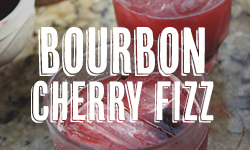
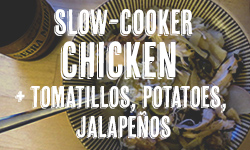
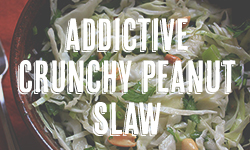
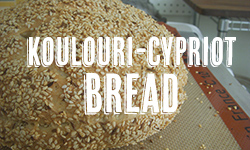
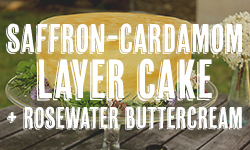
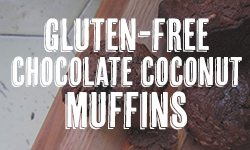
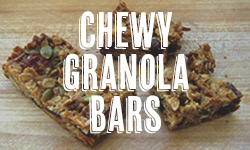
This totally happens when the produce is coming from your own backyard too–it really helps to have a few adaptable recipes to plug in what’s ripe (or just dominating the fridge). I like this template of how to use ingredients in a frittata–I am in a rut of using the same things in mine lately, this is a good nudge to try some new combos, thanks.